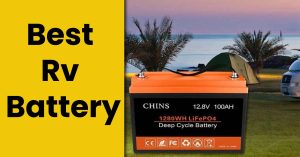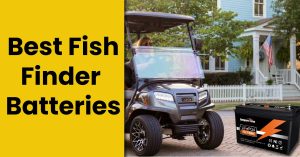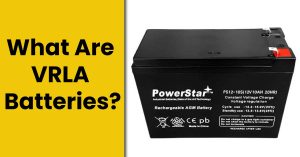Best Marine Batteries of 2025: Top 8 Boat Batteries
Selecting the best marine battery is not an easy job because we can’t always trust the manufacturer. You have to research a lot before making a purchasing decision. The battery might not be as big as other components on the boat, but your battery-powered boat will not move an inch without it.
Firstly, you need to decide whether you want a marine starting battery, 12v deep cycle marine battery, or a dual-purpose marine battery.
Then, we have to look at the key features like cold-cranking amps, marine cranking amps, size and weight, reserve capacity, energy density, self-discharging rate, vibration resistance, shockproofness, and nominal voltage.
There are a lot of marine batteries out there, and we will help you find the right one to start your engine smoothly and run all the appliances on the boat.
How Do We Select The Marine Batteries?
As you already know, boat batteries are a lot different than automobile batteries, so we interviewed a bunch of professional scuba divers in Key Lago, Florida, who use depth finders, underwater cameras, audio systems, and other appliances on their boats.
We also talked to local fishermen in Seattle and New Orleans about the challenges they faced out there on the water and how they tackled them using life-saving devices like radios, searchlights, and stuff.
Lastly, we talked to people like us who are boating and kayaking nerds.
We found out that marine batteries that are lightweight, compact, and durable with high cold-cranking amps, reserve capacity, and low self-discharge rates were the top choices for these people.
Based on our data, we selected the top 8 best boat batteries that fulfill the above-mentioned criteria and then some more. Our listed batteries will start the engine smoothly and will provide uniform voltage throughout.
Let’s get down to the list.
1. Odyssey 31M-PC2150ST-M Marine Battery
FEATURES & SPECS
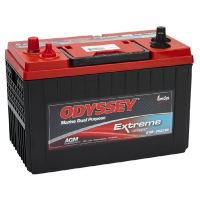
Odyssey 31M boat battery delivers close to 1150 CCA and 2150 Hot cranking amps; they pack more lead into a rugged package than any other competitor with a similar price tag.
This battery is perfect for heavy-duty use on boats and other watercraft due to its vibration resistance, durability, and long lifespan.
Due to pure lead plates tightly packed together, this enables Odyssey 31M to fully recover even after 350+ cycles of 80+% depth of discharge. That is some serious juice. No wonder people refer to this battery for trolling motors and marine usage.
This battery takes 5 – 7 hours to fully charge and it delivers stable voltage. The manufacturer says it can last up to 10 years but I don’t think anybody will use it for that long. I usually change batteries after every 2 years.
The self-regulating valve is added for gas reabsorption, the container is super durable and highly flame retardant.
Before I give out any recommendations, I usually conduct a capacity test, and guess what? The Odyssey 31M passed it with flying colors.
I have never had any problems starting my boat on cold mornings. The Odyssey 31M boat battery literally won’t freeze down to -40F.
Manufacturers are using pure virgin sealed lead acid, which allows the battery to have top-notch performance in its recycling.
Most of my mates think Odyssey 31M is the best marine battery, I don’t know about that because it has its competitors but it is certainly one of the best.
2. VMAX XTR27-110 AGM Marine Battery
FEATURES & SPECS
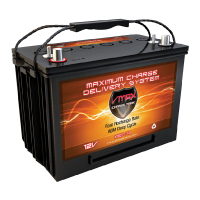
Featuring 110Ah nominal capacity, VMAX XTR27-110 may be very heavy for a boat, but it is an extremely versatile and powerful battery.
It is a dual-purpose unit designed for both marine, and cars featuring vibration resistance and good performance at a very budget-friendly price.
VMAX XTR27-110 boat battery creates no smoke or dangerous gases with a 99% recombination capacity design. It is safe for boats.
You can connect VMAX XTR27-110 to a battery maintainer if the battery is fully charged only. If it is discharged, make sure to charge it, don’t be clumsy.
So the manufacturers are saying VMAX XTR27-110 has 660 CCA and 880 Marine cranking amps (MCA). Being an AGM battery, these cranking amps are not that impressive having 110Ah nominal voltage.
But, fortunately, the VMAX XTR27-110 marine battery is not made for cold cranking or marine cranking amps, I put it on the list because of its reserve capacity (RC) which is around 220 minutes.
So in theory, a brand new battery can give out 25 amps for 220 minutes while keeping the Voltage above 10.4 to 10.5 volts (1.75 per cell) which is not bad at all.
VMAX XTR27-110 is a bit heavy for a fishing kayak or small boat but if your boat can handle it, then give it a try, I would recommend it.
Small fishing kayaks hardly ever require more than 25amps so I am assuming this battery should last at least 3 to 4 hours.
Some use large GPS fish finders and other small fish finders that draws around 0.3 amps, some also have LED light navigation that draws around 0.6 amps. So Depending on the fisherman or boat user, VMAX XTR27-110 can last from a few hours to an entire day or more.
So overall VMAX XTR27-110 is a multi-purpose battery that is mostly used for marine operations, it is vibration and shock-resistant, it has a deep discharge and high capacity at a budget-friendly price.
3. Renogy 12V 100Ah Lithium Iron Phosphate Marine Battery
FEATURES & SPECS
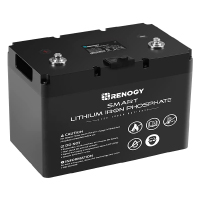
Renogy 12V 100Ah is very much similar to Renogy RNG-BATT-LFP-12-100 model, except that it has an advanced BMS and super durable casing.
Before dismantling this battery, I would like to mention that this battery can only be connected in parallel. You cannot connect it in series.
The first thing I noticed was an extremely complex and sophisticated BMS which is always a good sign. Renogy 12V is using 2 XT90s that can handle up to 180amps.
This is battery well-constructed, and every connection is nicely done. They are using pouch cells in packs of 4. This battery is battle-born competition.
It features a 100Amp continuous discharge current and more than 4000 cycles of lifespan. The nominal voltage is around 12.8V.
So I did a capacity test using a 300amp shunt and battery capacity monitor. So after 5 hours, I pulled 106Ah and 1370Wh which is more than the advertised 1200Wh. That is crazy.
Overall I am super impressed with this battery, it is lightweight and compact which is perfect for marine usage, capacity and life cycles are also on par. If you are using a 12-volt solar power system then this battery is ideal for you if you are not planning on using a 24 or 48-volt system. The only parallel I have is Renogy 12V boat battery is not offering a series connection.
They have offered communication porn to monitor the entire central hub system like how much power is coming from the sunshine and how much power the inverter is using, state of charge, etc.
4. Optima OPT8016-103 Marine 12v Deep Cycle Marine Battery
FEATURES & SPECS

Compared to other lead-acid batteries, Optima OPT8016-103 uses spiral cell technology which has three times more life expectancy.
The spiral cell design is unique and it offers a robust power source to ensure safety and reliability out there in the water.
Optima blue top has 870 marine cranking amps and 120 minutes reserve capacity, and incredible vibration resistance. This is the main reason people choose this battery. The charging can last for an entire day if you are a little low on load.
750 cold-cranking amps are good for cold conditions. If you are from a colder region, high marine cranking and cold-cranking amps will help you in starting the battery.
Optima OPT8016-103 is specifically designed for recreational vehicles and kayaks with high reserve capacity so that you won’t be stranded anywhere without power.
Optima BlueTop comes with a 5/16 stainless steel stud terminal to capture the ring-style boat terminals. The 12v deep cycle ability is just about 54- 55Ah.
I recommend a pro-login smart charger which will recover the battery in time in case you are 10 volts down.
Optima OPT8016-103 is not the lightest and most compact marine battery, but it is mountable in any position and an ideal option for trolling motors and small boats.
5. ExpertPower 12V 100Ah Marine Battery
FEATURES & SPECS
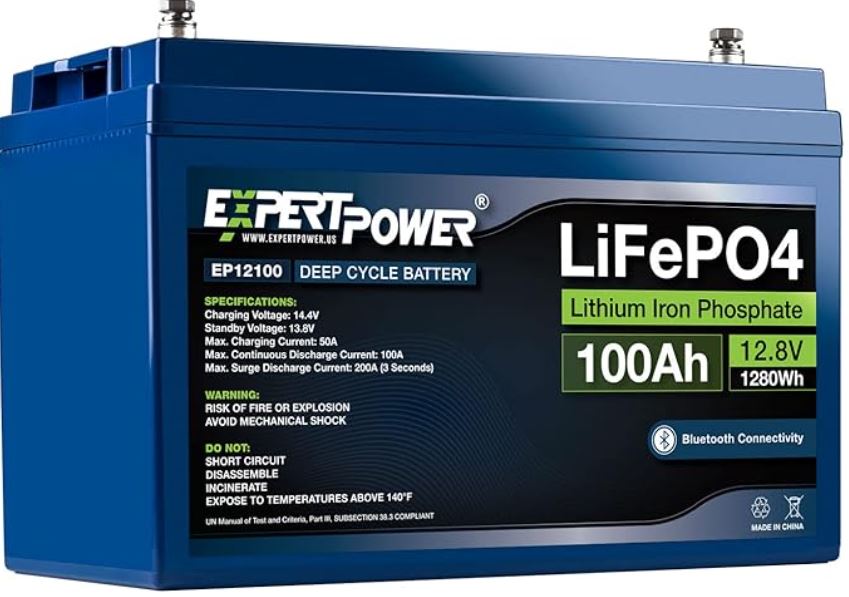
ExpertPower 12V 100Ah may not be the best marine battery or best deep cell marine battery, but it is certainly among there with its high density. It is UL safety certified, lightweight, and compact which is a huge deal out there in the water.
It features a BMS (battery management system) without low temp charging protection which sucks. I tested it myself by actually dipping the sensor in the cold water, but no reading was shown on the screen. It is not like that you can’t install your own BMS, but a battery of this much power should feature low temp charging protection.
ExpertPower 12V 100Ah discharges 70amps and charges 50amps continuously. I did some tests as I usually do with marine batteries, and at max: load I pulled about 9 minutes and 5Ah. It passed the test.
I drained it, I pretty much ran it until it died.
The final test results were 110Ah and 1410Wh which is 10% more than the advertised capacity.
If you want to connect ExpertPower 12V 100Ah to a large inverter, find the max: continuous discharge rate and find out what your inverter needs. You would put multiple batteries in parallel for that.
It provides sufficient marine and cold cranking amps for a fish finder and small boats. The reserve capacity is also good. If you are not too big on load, it might last for an entire day.
The only problem I have is low temp charging protection. It doesn’t have that sensor. Other than that, it is a solidly built marine battery with clean connections. I would recommend it for its lightweight. You might not want to drag a heavy-ass battery in a small boat.
6. Lossigy LifePo4 200Ah 12v Deep cycle Lithium Deep Cycle Marine Battery
FEATURES & SPECS
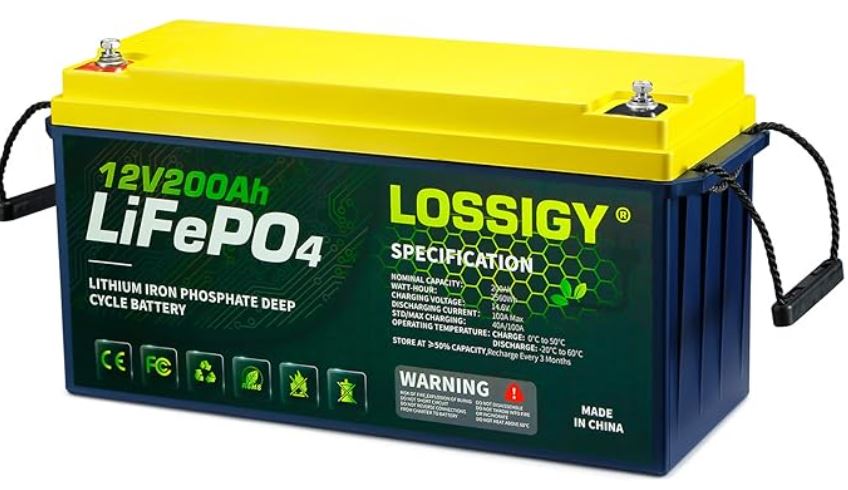
Lossigy LifePo4 is a very powerful battery that has a 200Ah capacity and DOD of 100%. Lifespan is close to 5000 discharge/charge cycles but you can get some extra cycles out of it with proper care.
So my Lossigy LifePo4 was around 13.24 volts when it arrived and appeared to be well-constructed. Two cables and two bolts were included but I use my cables.
My charger was set to 40amp bulk, and 10amp absorb, and they charged for another 5 hours at 55.3v until hitting float at 2.1amps. The voltage settled down to 53.12.
I didn’t notice any heat in the terminals during charging. Lossigy LifePo4 passed the capacity test as well, so good overall.
I ran a lot of devices overnight including a gaming computer and water pump, I drew around 450 average watts all night. I am extremely impressed.
Lossigy LifePo4 deep cell marine battery has both low temp charging protection and high temp charging protection in its BMS which is a relief. I don’t want to recommend such a battery in colder conditions.
It can also provide a high current of 280amps in 5 seconds, or close to 400amps in 1 – 2 seconds. I don’t recommend pushing it too far.
I went to boondocking with my 200Ah Lossigy LifePo4 battery, the sunlight was very limited for a couple of days but it kept us powered. It performed exceptionally well.
It has enough cold cranking and marine cranking amps to not disappoint you in any weather condition.
I am hearing complaints that its BMS is providing enough protection when short-circuited. I don’t why people are short-circuiting their battery in the first place.
So overall Lossigy LifePo4 is solidly constructed and very powerful in a smaller casing compared to other batteries of similar capacity. It is an ideal battery for boats and fish finders. It is compact and lightweight.
7. GreenLife Battery GL100 100Ah 12v Boat Battery
FEATURES & SPECS
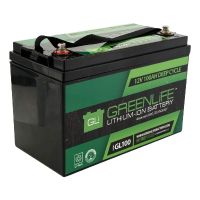
GreenLife Battery GL100 is one of the most durable, and highest capacity lithium-ion marine batteries with an incredible lifespan.
The cells are bolted together to ensure maximum strength durability, and most importantly, conductivity. I think it is the best marine battery in terms of strength and durability.
GreenLife Battery GL100 is super compact and has 70% less weight compared to lead acid batteries which is a lifesaver if you are going to use it in fish finders or boats. I don’t want to drag a heavy ass battery.
Manufacturer’s claim it provides constant voltage even under high amperage usage. I tested it to an extreme level and a slight drop in voltage which is not significant, but worth mentioning. I don’t think it is much of a problem.
One of the main reasons I bought three of these GreenLife Battery GL100 batteries is because of their virtually zero self-discharge rate. They will hold the charge for an entire year with losing only a 3 – 5% charge per month. Lead-acid batteries lose close to 35% of their capacity due to self-discharging which is huge.
It is a dream of any boater. My 3 batteries easily run refrigerator because these little beasts take 100% of the charge.
GreenLife Battery GL100 is using an advanced BPS (battery protection system). You can operate them in both high and low temperatures (-4F to 140F).
A huge problem with OEM batteries is they will burn if you overcharge them, such is not the case with GreenLife Battery GL100 batteries, and their energy density is about four times higher than its competition.
So the manufacturers are saying they will last up to 5000 cycles which is more than enough for me.
Its rated capacity is about 100Ah and its minimum capacity is close to 96Ah. The Standard cut-off current is 10.0V.
So overall, this battery is a boater’s dream. 10/10 from me.
8. Universal Power Group 12V 100Ah Marine Battery
FEATURES & SPECS

Universal Power Group 12V marine battery is ideal for RVs and boats because of its spill-proof battery and vibration resistance. It is among the best boat batteries despite its weight.
I tested them out on my solar kit just to make sure. For 30 – 35 minutes, I pushed them close to 1500 watts and there wasn’t any significant voltage drop. The unloaded voltage return after 30 minutes was 12.81V which is excellent.
I understand it is a super heavy battery for a small kayak or boat, but if your boat can handle it, you should go it because its performance is superb, and its vibration and shock proof which is kinda a big deal for batteries at a mid-range price tag.
Back in 2018, I hooked my Universal Power Group 12V to my 160-watt solar panel (30 amp charger). It worked splendidly. Now they have advanced their technology in these batteries so one should expect even better performance.
It is virtually maintenance-free so a plus point right there. You can mount them anywhere.
A lot of people are complaining about the short lifespan in recent months, I don’t know about that. This is the second time I am using these batteries and I don’t have any issues.
My verdict is if your boat can handle the weight, you should go for these batteries.
What To Look For In The Best Marine Battery-Buying Guide
We have compiled a very compelling and helpful buying guide about the best marine battery in which will talk about its size and weight, power, reserve capacity, cranking amps, types, and performance.
Read each section carefully before making a purchasing decision. Small things matter.
Enough CCA (Cold Cranking Amps) & MCA (Marine Cranking Amps):
Both CCA and MCA are measures of how much amperage a battery can give over a short period to start the engine in cold weather either on land or in water.
CCA is extremely important for marine batteries, the higher the CCA, the smoother the battery will start.
CCA rating means several numbers of amps a 12V battery can give at 0 degrees F for 30 seconds while maintaining at least 7.2V. MCA is applied at 32 degrees F.
Weight and Size:
My advice is to avoid bulky batteries. Heavy and big batteries in size are never ideal for small boats and kayaks. Anything under 50lbs. is ideal. You can go beyond 60 – 70lbs. if your boat can handle the weight.
RC (Reserve Capacity):
It is the number of minutes or hours a fully charged 12V battery can provide until the voltage decreases.
A higher reserve capacity out there in the water is necessary. Batteries like GreenLife Battery GL100 have extremely high reserve capacity that can last for days on low load. Even if you increase the load, it will last for hours. I would recommend a higher RC battery even if your boat is loaded with solar panels.
Type Of Marine Batteries:
Marine batteries are more expensive than RV or other automobile batteries because they are specifically designed for boats only. Marine batteries are specifically designed to withstand vibrations and shocks that occur out there in the water.
Even if the car or RV batteries are powerful, it is never recommended to use them on the boat.
Firstly, let’s talk about different types of marine batteries, then we will get to how to choose a marine battery.
Marine Starting Battery:
Marine starting batteries are designed to deliver one large burst of power to start the boat engine. The battery discharges about 1- 4% of its power, then the alternator quickly recharges the battery.
Mostly, we power our small appliances or trolling motors onboard and starting batteries are not suitable for this purpose. Starting batteries are not a good choice for powering appliances.
Click here to get a guide about How to replace a boat battery
Deep-Cycle Marine Battery:
Deep-cycle marine batteries have high marine-cranking amps and high cold-cranking amps. These are spill-proof, vibration and shock-resistant, and strongly built. These are ideal for powering appliances onboard.
All 8 batteries on our list can power fish locators, depth finders, audio systems, and thrusters. These batteries are designed to go through thousands of cycles while discharging slowly.
Marine Dual-Purpose Battery:
A Marine Dual-purpose Battery combines the power of starting batteries and deep-cycle marine batteries. Although it is a good option to purchase one dual-purpose instead of two different batteries, I won’t recommend it because it will not provide top-notch performance or either starting or deep-cycle Marine batteries.
Marine Battery Tips
Recharge your battery slowly and overcharge them:
Read the manual, and don’t wait for hours and hours to charge the battery. Some batteries take 4 to 5 hours to be fully charged. Don’t go beyond that limit.
Slow charging is always better than fast charging.
Charging boat’s battery:
Unlike cars, we don’t use our boats daily (excluding the fishermen). That is why automobile batteries last longer compared to even the best marine battery.
Trickle charging or regulated charging is recommended if your battery sits for long periods. Remember to always charge the new battery.
A maintenance-type charger:
Use a maintenance-type charger. It will keep the battery fully charged when you are not using it. If you are not using your battery and storing it, disconnect both terminals.
Cover the positive terminal of the battery even if it is inside the covered box to avoid sparks or a possible explosion.

Alex Black is a seasoned electrical engineer with a remarkable 8-year track record specializing in appliances, generators, and transfer switches. With extensive hands-on experience in the field, Alex possesses a deep understanding of electrical systems and their intricate workings. Throughout their career, Alex has consistently demonstrated expertise in designing, troubleshooting, and maintaining various electrical appliances.

